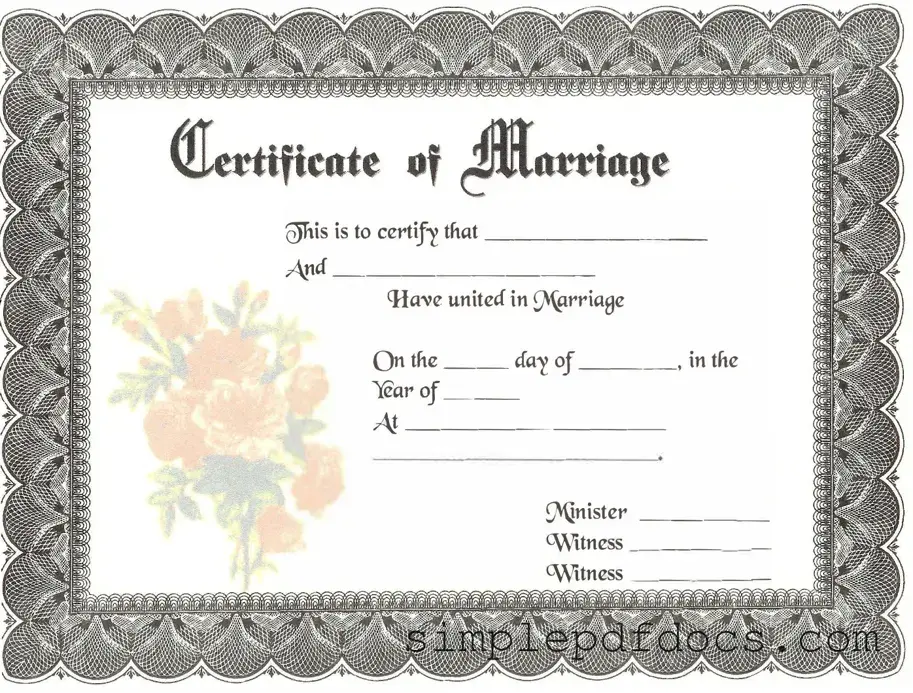When two people decide to unite in marriage, one of the essential steps in that journey is obtaining a marriage certificate. This official document serves as proof of the marriage and is often required for legal purposes, such as changing names, applying for joint financial accounts, or even filing taxes. The marriage certificate form typically includes important details such as the full names of both parties, their respective birthdates, and places of birth. Additionally, it often requires information about the officiant, the date of the ceremony, and the location where the marriage took place. Completing this form accurately is crucial, as any errors can lead to complications down the line. Furthermore, the process for obtaining a marriage certificate may vary by state, with specific requirements and fees that applicants should be aware of. Understanding the nuances of this form can help couples navigate the administrative side of their union with confidence and ease.
